
The Pilgrims' Progress, March 1, 2012
 |
||
| "Life is like a drop of dew on the tip of a blade of grass that is evaporated by the sun." | ||
In the early planning, we dreamed about inviting our landlord, Manel, and his wife, Savithri, but his health was too precarious. All we could do was include them in our meditations, phone them as we went, and buy the medicine in India his doctor has prescribed, for Charles, his brother-in-law, to carry back.
When she heard about the pilgrimage, Lily immediately expressed her interest in going. Lal was finishing his Masters exams and in need of a break. Michael had begun a pilgrimage a year ago which was aborted before it really got underway, so he was eager to join. Then Mike got the word from his teacher in the US, Ven. Sujata, asking whether his parents could go, too. Finally, Nimal who does gardening and is one of the nicest people we know asked to be included. Why not! It would be an interesting group of Sinhala and English speakers, which meant that everybody should be comfortable.
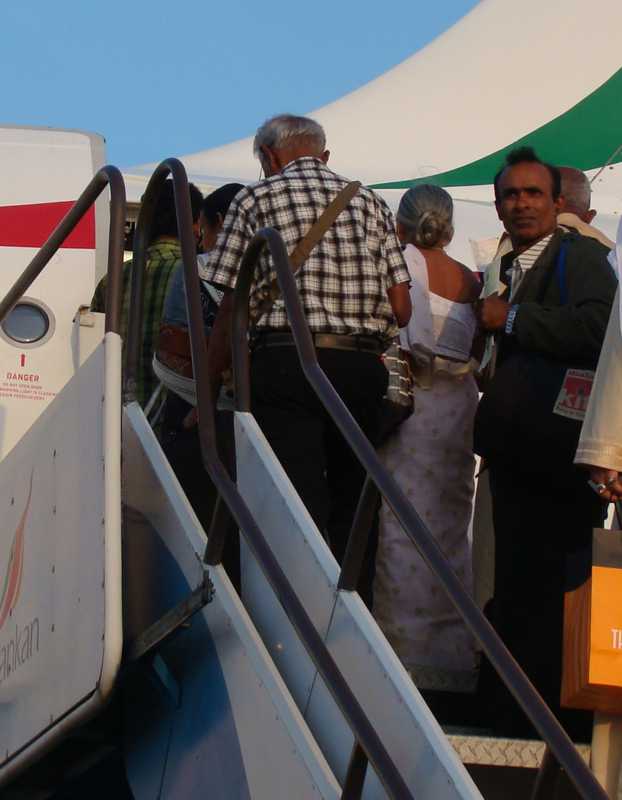 |
|
| Cllick the photo to begin a photo record of our pilgrimage. | |
 |
||||
| Click the image to see excerpts from the book. | ||||
| This PDF file with color illustrations is 2.5MB and may take several minutes to open. | ||||
 |
||
| Click the image to read excerpts from the book. | ||
This was the third or fourth time we had visited these places, and, early on, we realized that we'd best keep all comparisons with past pilgrimages to ourselves. Nobody needed to hear how many vultures there had been in Varanasi in 1968, how much quieter BuddhaGaya had been in 1979, or what things had been like when we'd traveled with Bruce, or with Susan and Beverly. Certainly, travel now is more comfortable than it was on our first pilgrimage.
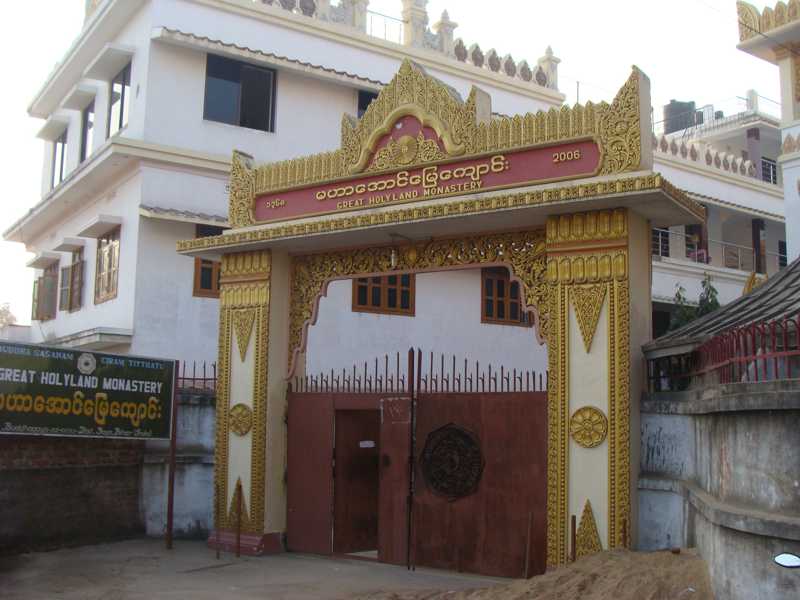
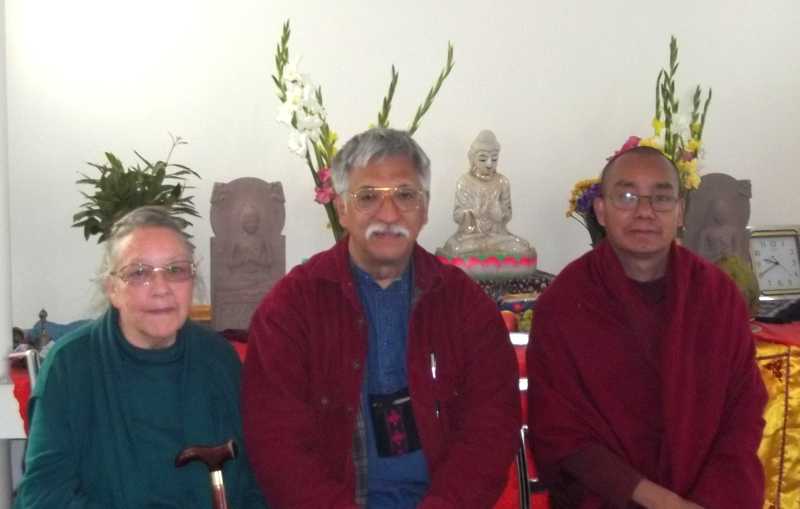

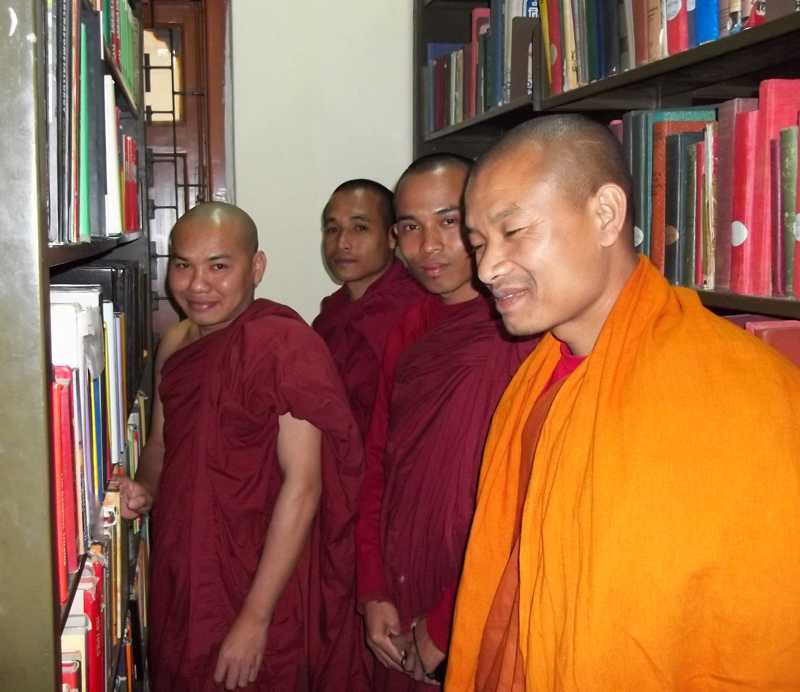
Before we left, we warned Lily in no uncertain terms that she was going as a pilgrim, not as our cook and housekeeper. She took it to heart with one exception. Try as we might, we could not persuade her, by hook or by crook, to use our names. We seem destined to always be "Sir" and "Madam" to her. That seems to be the Sri Lankan way, and we just can't fight it.
Nobody really believed that it was going to be cold, but we knew. To be safe, we packed a hefty supply of Nepalese wool blankets and Indian shawls. Everybody used them, and we can't imagine how we all would have survived without them. Fortunately, we also carried our guest cell phone, which, when fitted with an Indian sim card, was used not only to make calls back to SL but also as a walkie-talkie to keep communicate between rooms and across cities. At the end of each day, Ken collected everybody's photos in his computer, sorting and organizing them, so that, when the pilgrimage ended, everyone could have the complete collection. Included here are the best, in our opinion, of those 10,000!
We had only one day of bad weather. It rained heavily as we departed Nepal and returned to India. Feeling cold and miserable at the prospect of a long drive, we asked the driver if he knew of a good place to stop for coffee. We were joking, but he answered very positively and mentioned a Thai café. We took that also as a joke. A few minutes later, he stopped the car in front of a thatched hut. We climbed out of the van and crowded into the dimly-lit shack. 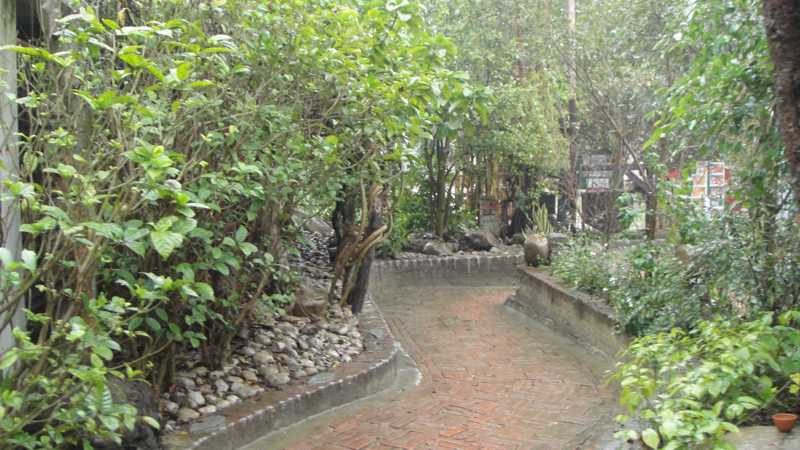
 We said we were not going to compare pilgrimages, but one thing which this pilgrimage included, which others had not, was regular group meditation. In Merit, it is an integral part of the tour, and it was for our group, too. In BuddhaGaya, we were fortunate to meet Ven. Pannasila, and he introduced us to the splendid meditation garden he had created from a garbage dump, during his tenure as Secretary of the MahaBodhi Temple Committee. It is open for a few hours each morning and evening. There is a small admission fee, so it is quiet and well-maintained. The serenity of the lawns, the flowers, the paved pathways, and the pavilions, with the majestic temple in the background, is inspiring, perfect for meditation as the sun sets.
We said we were not going to compare pilgrimages, but one thing which this pilgrimage included, which others had not, was regular group meditation. In Merit, it is an integral part of the tour, and it was for our group, too. In BuddhaGaya, we were fortunate to meet Ven. Pannasila, and he introduced us to the splendid meditation garden he had created from a garbage dump, during his tenure as Secretary of the MahaBodhi Temple Committee. It is open for a few hours each morning and evening. There is a small admission fee, so it is quiet and well-maintained. The serenity of the lawns, the flowers, the paved pathways, and the pavilions, with the majestic temple in the background, is inspiring, perfect for meditation as the sun sets.
At one time or another, everyone in the group expressed their satisfaction with the pilgrimage. Charles said that he wished he had done it long before because it was so worth doing. Manel told us how much she enjoyed the meditations and how very well she felt.
For Visakha, everything was very comfortable. In each place, she could walk as much as she wanted, and the wheelchair was available when she was tired or when it was likely she would slow her companions, and for group meditation .
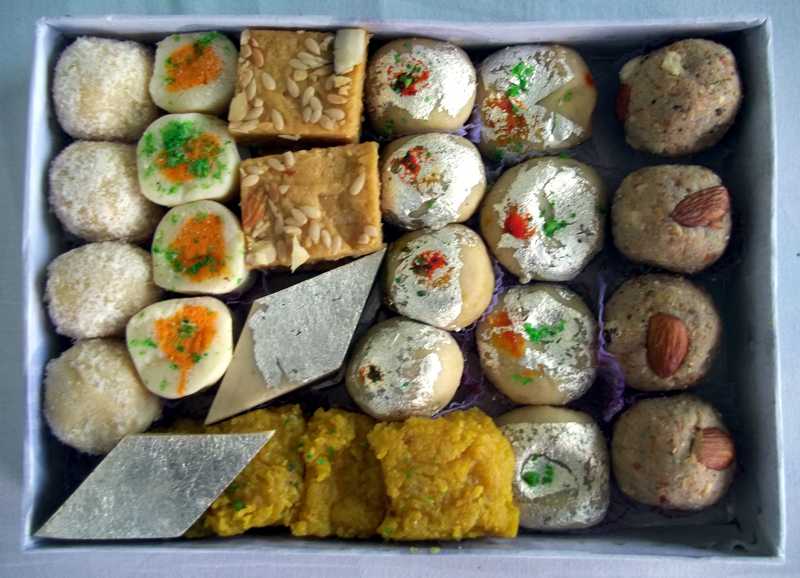


|
Rebirth Again and again, they sow the seed. |
|||
One of the happiest aspects of the pilgrimage was giving. We were eating very well everyday, so we resolved that nothing from our table should go to waste. After each meal, we collected the leftovers. Sometimes, we gave them to beggars, sometimes, to animals. We quickly learned that puppies love Indian cheese, that cows relish banana and orange peels, and that goats will eat almost anything. We took part in the peculiar economics of Buddhist sites by buying coins from brokers to distribute to children, the women with babies, the elderly, and the handicapped on crutches or a rough self-propelled cart, who throng the entrances and pathways. Visakha repeatedly encouraged the children to reply with a "Thank you!" Whenever someone cautioned us not to give to such unworthies or opined that things shouldn't be that way, we always replied that that is the way it is and that we were grateful for the opportunity to give away a little wealth. In reality, the beggars were working diligently. They had their job; we had ours. A terribly deformed leper woman in a train station reminded us of the lepers we'd watched years before in Rajgir. At that time, a leper colony had reserved their own train car which they used during the tri-annual festival. Everyday, the more able-bodied transported the more handicapped to their assigned places for begging. Each person worked his eight-hour shift. It was a job of sorts, and we hoped that it included a decent retirement plan.
Towards the end of our pilgrimage, Manel had run out of small money. Without a second thought, she handed her old slippers to a destitute woman at the train station. In return, she received one of the best smiles we'd ever seen. Everywhere, giving was truly joyful, just as long as we didn't hesitate or regret it afterwards.
There was some confusion about the train from Varanasi to Kolkata, and we had to board quickly. Our luggage was piled in the space at the end of a carriage, and we sat down nearby until it was convenient to move to our air-conditioned berths. While we were waiting there, we chatted and talked with the other passengers. A young Nepali man was going home for the holidays after a year of medical school in India. He was happy to hear our sincere praise of Nepal. Out of the corner of her eye, Visakha saw a boy, literally in rags, crawling along the floor with a rude broom, sweeping the aisle. One man stood up, pointed at the boy, and hollered something. Someone else gestured for the boy to get out of the way. He was brushing up a pile of peanut shells passengers had strewn all over the floor. A woman cursed him for sweeping them in her direction. Suddenly, Visakha understood what was happening. This was a second-class coach without a proper attendant. This Dalit boy was being ordered by passengers to sweep and clean up the mess. With so many people shouting confusing, conflicting commands, he was unable to please anyone. After he had cleaned up around the first man who had shouted at him, he crouched forward with his hand out for a tip, but the man nonchalantly shooed him away. "Sir!" Visakha shouted. "You called him over to sweep up the mess. You had better pay him for his effort. He earned it!" People looked up at this elderly American woman speaking loudly to a fellow passenger, and the man gave the boy a coin. Visakha searched in her bag but could not find any small bills. She took out a one hundred-rupee note, folded it, and put it into the boy's filthy hand. Just then, Rajiv called us to move to our own coach. The young boy suddenly stood up straight and gave her a stunning smile. Visakha smiled back, raised her closed fist, and said, "Jai Bhim!" "Jai Bhim!" the boy silently mouthed.
|
The Buddha said: "If beings knew, as I know, the results of sharing gifts, they would not enjoy their use without sharing them with others, nor would the taint of stinginess obsess the heart and stay there. Even if it were their last and final morsel of food, they would not enjoy its use without sharing it, if there were anyone to receive it." |
|||
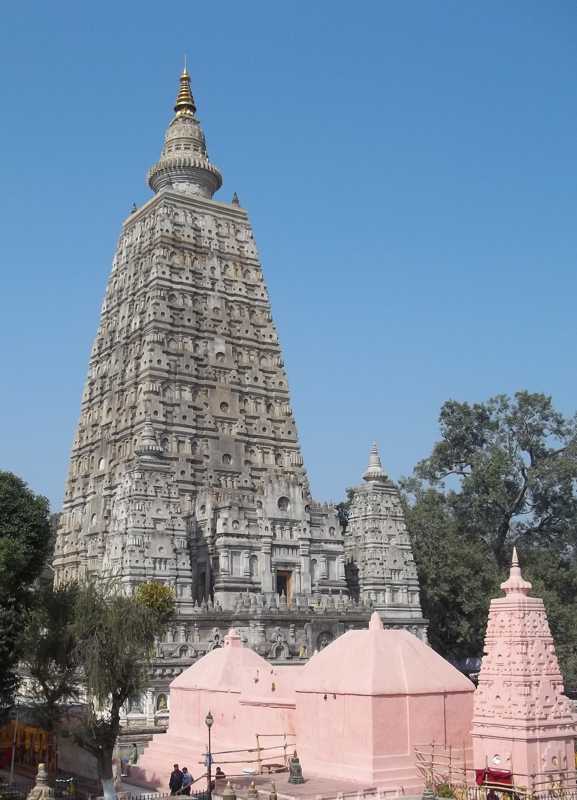 Buddhists traveling to India quickly realize that their sacred places are not really theirs. There are Hindus in control of the MahaBodhi Temple Committee, raking off the donations and doing nothing for maintenance, let alone repairs. There are Hindu shrines (denounced long ago by Mahatma Gandhi himself) within the precincts of the temple itself. Buddhists cannot worship or even take photographs of images in government museums. In Patna, after paying extra and respectfully removing their shoes before entering the room where the Buddha relics from Vesali are exhibited, worshipers see museum employees standing around, casually chatting, with their shoes on. In Vesali and Kesariya, within the confines of the areas protected and managed by the Archeological Survey of India, adjacent to the ancient Buddhist monuments, there are new Hindu shrines in use. In Lumbini, the Lumbini Development Trust stops all motor vehicles far away from the Sacred Garden, so pilgrims have to walk miles to the entrance where they then are ordered to remove their shoes. All who have paid to enter the garden must walk barefoot even in the coldest weather along the paved paths, although employees and soldiers, many with automatic weapons, stroll unabashed in their shoes and socks or combat boots.
Buddhists traveling to India quickly realize that their sacred places are not really theirs. There are Hindus in control of the MahaBodhi Temple Committee, raking off the donations and doing nothing for maintenance, let alone repairs. There are Hindu shrines (denounced long ago by Mahatma Gandhi himself) within the precincts of the temple itself. Buddhists cannot worship or even take photographs of images in government museums. In Patna, after paying extra and respectfully removing their shoes before entering the room where the Buddha relics from Vesali are exhibited, worshipers see museum employees standing around, casually chatting, with their shoes on. In Vesali and Kesariya, within the confines of the areas protected and managed by the Archeological Survey of India, adjacent to the ancient Buddhist monuments, there are new Hindu shrines in use. In Lumbini, the Lumbini Development Trust stops all motor vehicles far away from the Sacred Garden, so pilgrims have to walk miles to the entrance where they then are ordered to remove their shoes. All who have paid to enter the garden must walk barefoot even in the coldest weather along the paved paths, although employees and soldiers, many with automatic weapons, stroll unabashed in their shoes and socks or combat boots.
Everywhere one goes on a pilgrimage, from the the crowds and bustle in BuddhaGaya to the silence of Jetavana in Savatthi , there is a sense of shared belief and purpose. It's absolutely thrilling to hear the many languages, dialects, and styles of chanting while circumambulating the MahaBodhi Temple. Sharing the devotion of pilgrims from every corner of the globe, one can praise the Triple Gem near the Bodhi tree, sit and reflect where the Dhamma was first taught, or meditate at the place where the Teacher breathed his last breath. On pilgrimage, one joins with uncountable others from the past to worship at these holy places because of our Teacher, his Dhamma, and his Sangha, aware that we are walking the Noble Eightfold Path together.
|
One Person |
|||
When we returned to Kolkata, Shilar was very happy! Bless her heart. It's been a remarkable year for her (she couldn't believe it--more than 14,000 people have watched her wedding on Youtube!) Rajiv's aunt passed away peacefully in July from leukemia. She probably didin't know that Shilar was expecting, but she certainly would have been very happy about it.
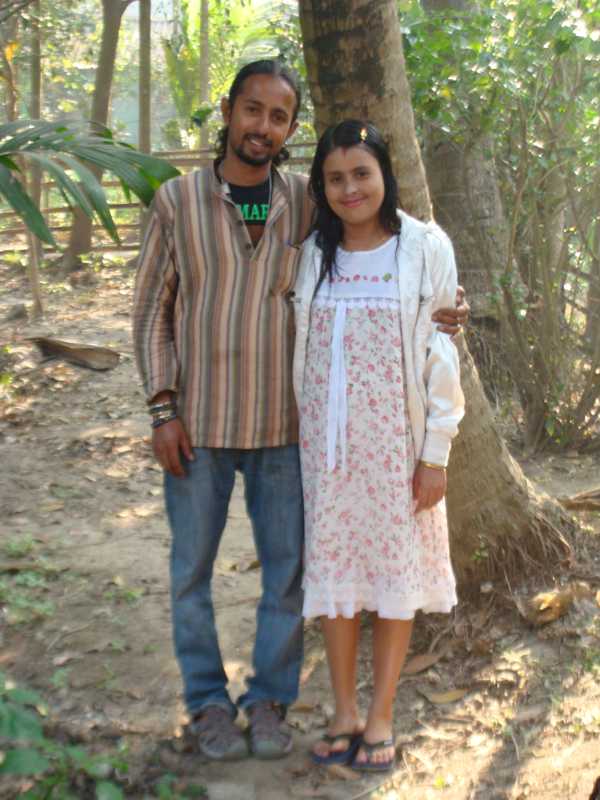
Now all attention is on preparation for her delivery. Lily had brought a neat quilted "baby pocket" blanket which Sarangi had decorated. Charles and Manel gave the couple a bath set with Kombha (neem) soap, powder, and oil. We brought a baby book (figuring they aren't going to have time to make one from scratch after the baby comes) and lots of tiny shirts. Susan and Martha had already given them lots of cute little outfits, many for cold weather. (It was winter when they traveled to Nepal with Rajiv and Shilar.) Some of the little suits look suitable for Himalaya trekking. Adorable!
 Now Rajiv, as always with help from his best friend Abhijit, is getting his aunt's little house ready for the baby, with a bright coat of paint, a new mat ceiling, and an inverter for those power failures Kolkata is famous for. We will be getting them a refrigerator--essential for the hot season.
Now Rajiv, as always with help from his best friend Abhijit, is getting his aunt's little house ready for the baby, with a bright coat of paint, a new mat ceiling, and an inverter for those power failures Kolkata is famous for. We will be getting them a refrigerator--essential for the hot season.
We're so glad to be here at this time! It seemed that they knew little about what was happening or what to expect, so Ken downloaded, formatted, and printed a practical guide to the third trimester of pregnancy, week by week. They are reading and talking about it together. They have also found a doula, an experienced woman who will be with them for the first couple of months to take care of the baby and to get them off to a good start as parents.
There are three parties planned--the traditional Bengali swad with lots of auspicious food is being planned by Rajiv's cousin and is for women only. We'll be hosting another at Bodhisukha. That will include offering a meal to the monks, paritta chanting, oil lamps at the pagoda and dedication of merit to the couple and the baby. The last will be an American-style baby shower just as Steve arrives. With these ceremonies and celebrations, we should have all bases covered
We found a terrific shop for baby-stuff in Kolkata's new mall, called City Center. At first, we felt like we were in Thailand, but, no! It was quiet and most of the stories were devoted to practical items not luxury brands, unlike the pricey boutiques of Paragon. The clientele were mainly Indian families, not the roving youth of Bangkok. The manager was a good salesman and showed us his full range of baby-beds, bassinets, and other necessities. We had a great time. As we left, Shilar kept lagging behind to chat in Bengali with every new mother she met, asking how old the baby was and complimenting the mother on her pretty child.
Shilar is cooking Burmese and Shan delicacies every day. While Rajiv and Abhijit are occupied with home improvements, she is spending time with us, telling us about her family for which Facebook is wonderful!, improving her English by leaps and bounds, and playing Freddi Fish with Visakha.
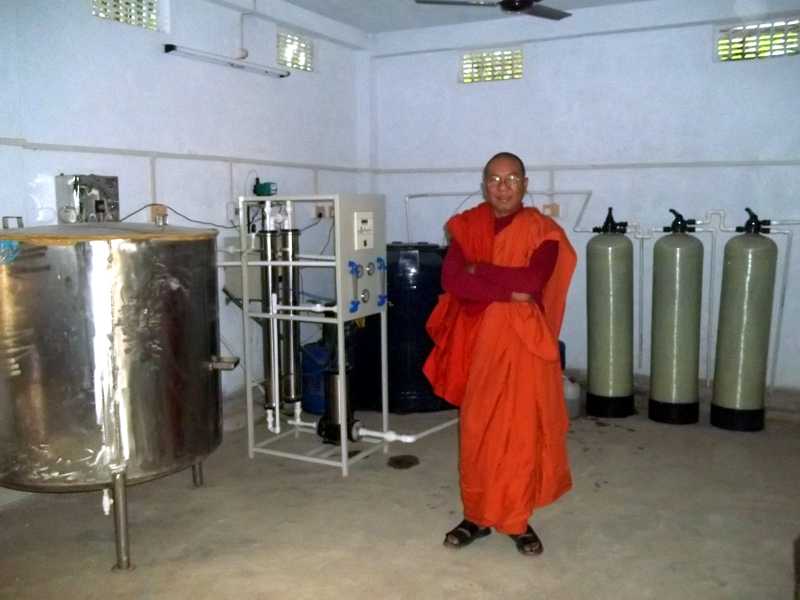
 Dr. Nandobatha ordered a clean-up, and everyone at Bodhisukha is recycling. There are three colors of bins in seven locations--one for compost, one for paper, and one for plastic. Visakha has made some signs to be posted around:. "Reduce! Reuse! Recycle!" "Don't be Mean! Go Green!" and more. We'll get them laminated and relish our clean and green environment.
Dr. Nandobatha ordered a clean-up, and everyone at Bodhisukha is recycling. There are three colors of bins in seven locations--one for compost, one for paper, and one for plastic. Visakha has made some signs to be posted around:. "Reduce! Reuse! Recycle!" "Don't be Mean! Go Green!" and more. We'll get them laminated and relish our clean and green environment.
|
|